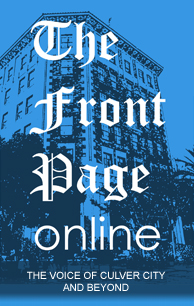What Diversity?
How many ticks would tock before before the 16 columns of newsprint would flutter to that part of the earth occupied by Pops fatigued face?
Around 30. He was not so predictable. Some evenings the outstretched arms would only last for 29 ticks.
Is This All There Is?
With his 92nd birthday approaching, Pop no longer is an avid newspaper reader. Since I left home at 17, as far as I know, he may never have visited the back end of a newspaper, although that may have changed after he retired.
Those memories were triggered last night by a story Pop never would have seen.
Missing in Inaction
It was too far back, on Page 10 of The New York Times, which still is the gold standard for American newspapers in pure writing and reporting talent.
But the ever-elegant Times, decades along, is as cheaply, as blatantly partial as a high school publication.
As an agenda-driven newspaper that finds it nearly impossible to tell an important story without including the opinion of the reporter, The Times is in the same shabby category as the Los Angeles Times.
Why Are We Dying?
Before returning to Page 10, many of Americas prestigious newspapers are sinking losing record amounts every quarter because of the unswerving rise of the internet.
Another reason surely is widespread dissatisfaction with agenda-shaped reporting, to the point that the traditional wall between news stories and the facing op-ed pages is less than tissue thin, if it exists at all.
They Resemble Twins
For a test, parallel an opinion piece on the op-ed pages of one of the Timeses and a news story closer to the front.
If they were side by side, could you identify the news story? Probably not.
If you still are not convinced, go to the Letters section. For these purposes, it does not matter whether you are politically liberal or conservative.
Speaking with a Single Voice
Typically in Los Angeles and New York, 95 percent of letter-writers attach their personal huzzahs to stories or essays presented from overtly liberal perspectives. Track the 2 pages for a week, or for as long as you have patience. You will find a remarkable pattern.
How can that be? If the country is evenly divided between liberals and conservatives, does each newspaper only attract far left subscribers?
Who Is Right? Who Is Left?
Had I just landed from the moon and monitored the news only in those 2 newspapers, I would have quickly concluded that America is down to its last 20 or 30 political conservatives.
They probably reside on a well-hidden commune under a snow bank in Nebraska, mocking the true-believing disciples of global warming.
They Have Been Wiped Out
By The Times and the Times, I would judge there cant be enough surviving conservatives out there in newspaperland to organize a football team.
One of the earliest lessons boys and girls in college learn about the fine art of shlepping propaganda is, the more subtle you are, the more effective you will be.
A Scan Job
From coast to coast, Americans historically do not read daily journals closely. They were the first scanners, long before the machine was invented.
Returning to page 10, I was drawn to a sidebar story on this weeks controversial nuclear agreement that the West made with North Korea. The main story on the agreement, on the front page, was labeled analysis, which authorized the reporter to administer a vicious 20-paragraph pounding of President Bush.
No Difference Detected
The reporter called him a garden-variety dolt for not having seen the benefits of this slick move 6 years, sentence after sentence. That was after the reporter compared the president, unfavorably, of course, with the dictator of North Korea. Only 2 sources were quoted in the story, both Clinton-era leftists who giggled at the presidents perceived bumbling.
Finally, let us go to Page 10, the subjectively composed sidebar where the same writing pattern was followed, meaning it was time to tattoo the White House again.
Sticks and Stones
From a journalists viewpoint, the most damning portion of the hardly nuanced story was undisguised in the second and third paragraphs.
The red-flagged terminology was like tripping over a boulder as you strode down a sidewalk.
The co-authors of this piece repeated what the analytical reporter had said on Page 1, that criticism of the nuclear deal came from the right and the left.
What Is Your Name, Mr. Hardliner?
The rub was in how the strongly partisan reporters identified the right and the left. And I quote:
From the right, hardliners argued blah, blah.
From the left, Democrats argued blah, blah.
At The New York Times, conservative is considered an inflammatory curse word that serves the unworthy, hopelessly blind political opponents of the Times right.
Instead of being fair and balanced, the leftists were not described as liberals, but rather Democrats, meaning mainstream.
Paying for Disagreeing
Hardliner, is, of course, a pejorative term, long a code word in journalism for persons who disagree with the reporter and his newspaper.
In the opinion of the two reporters, what made the critics on the right hardliners was their disagreement with the traditional ultra-liberal take of The New York Times.
Just another day at the propaganda lab.
